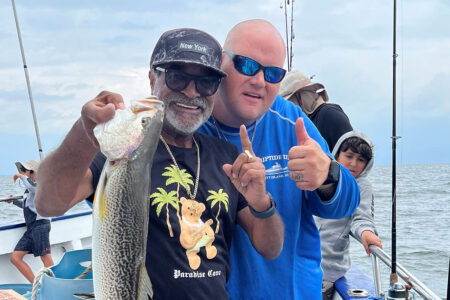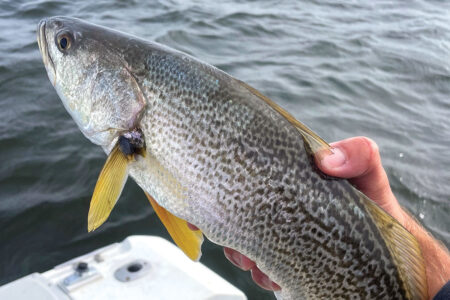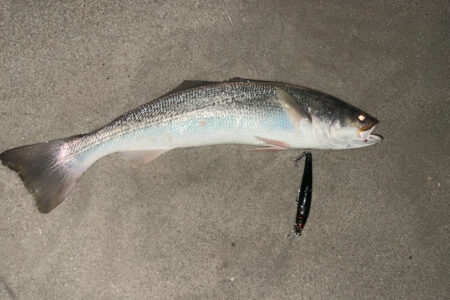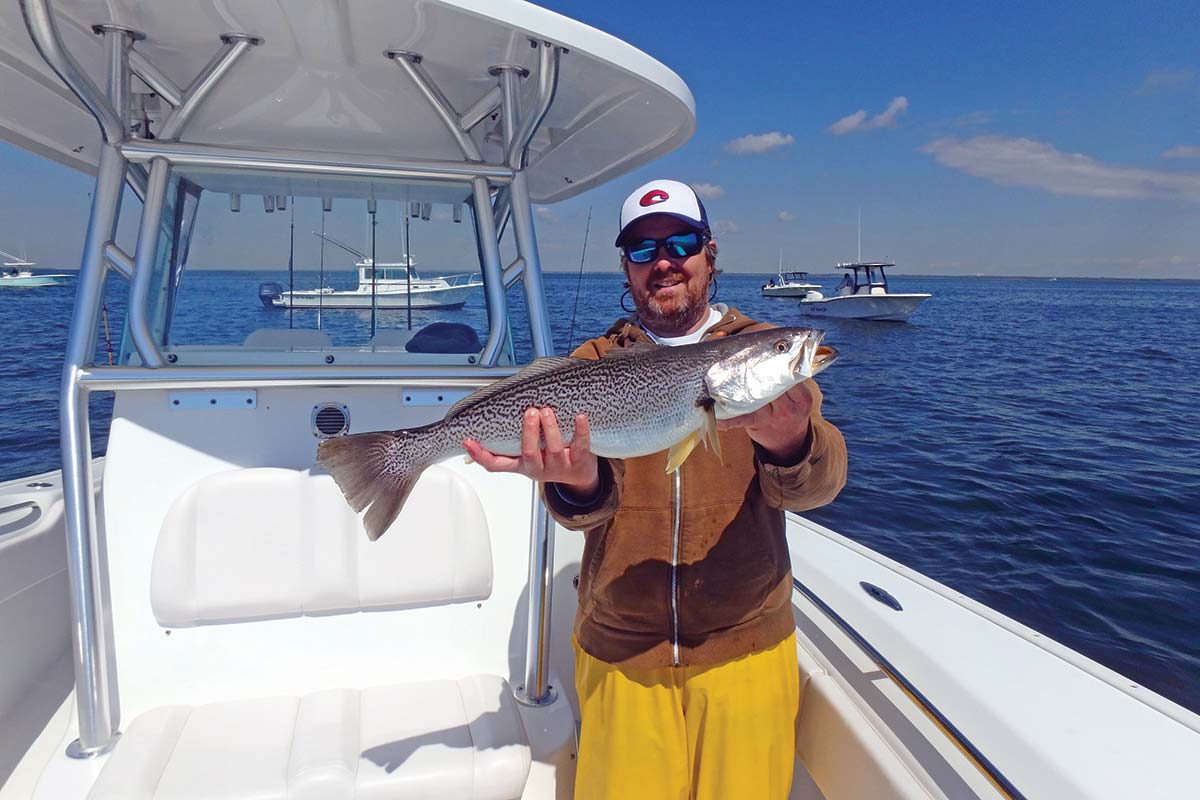
Locating areas with the potential to produce good weakfish action is actually pretty simple.
Before I bought my first boat, I would do most of my fluke fishing on party boats. I remember the first time I saw a sign on one of the boats that read “STRIPED BASS, BLUEFISH AND WEAKFISH 4PM-8PM.” I had never heard of, nor had I ever seen a weakfish. When I asked the captain about it he kind of chuckled and referred to them as mythical creatures. He then explained that weakfish tend to be very cyclical. If that is true, than it appears we are in the midst of a great weakfish revival. I know the fish may not be as big as they were in the glory days of the 1970s when huge schools of yellowfins entertained anglers from Delaware Bay to Cape Cod, however based on the numbers of fish we have been catching the past couple of seasons, the forseeable future looms bright. Not only are we seeing some great spring fishing, but it would be hard to imagine the summer weakfishing getting any better in some parts of their range.
If you truly want to target weakfish, the back bays are where you need to concentrate your efforts. I live on a canal 15 miles from the nearest inlet and I can usually find weakfish within 15 minutes of my dock. In fact I have actually caught them in my canal. I have searched out and found a lot of good weakfish spots in order to avoid the more traditional locations, which can get very, very crowded. Several times I have witnessed boats having to push off of each other to prevent them from colliding as they are drifting. Days like that are a perfect time to look for some new spots.
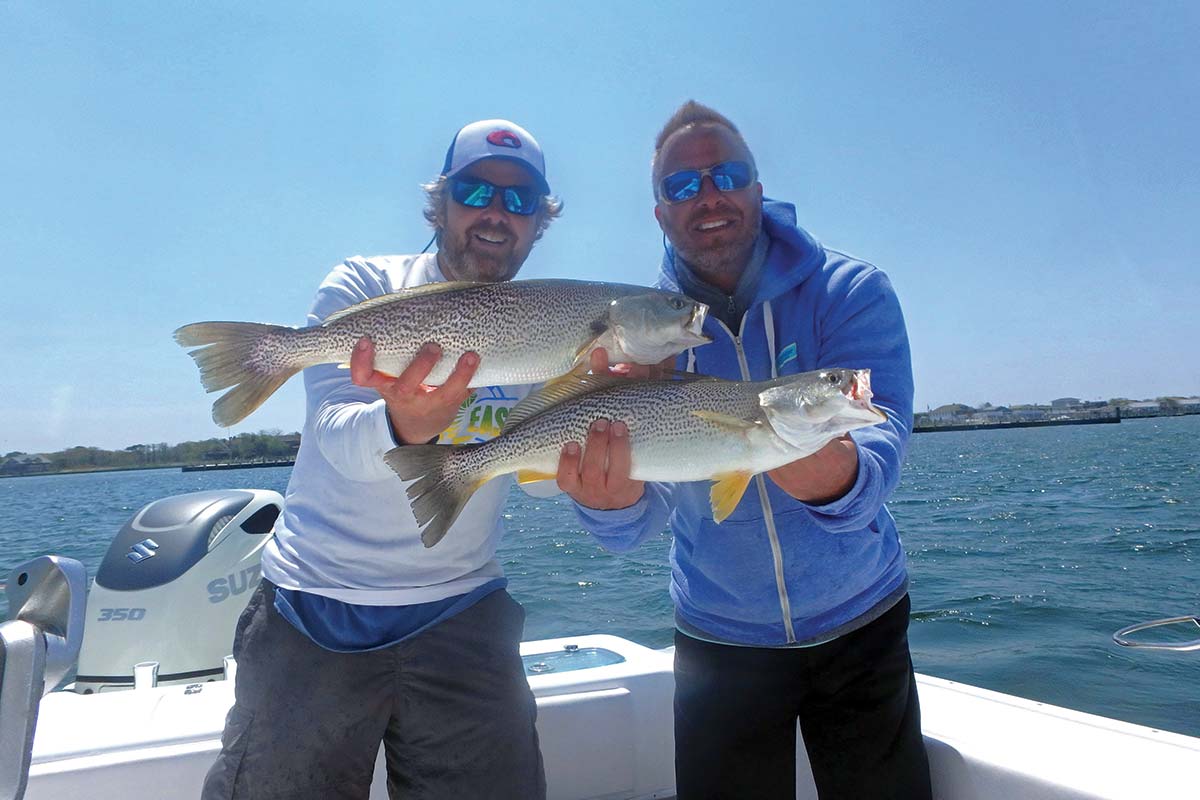
Finding Yellowfins
Locating areas with the potential to produce good weakfish action is actually pretty simple. Take a look at your chart plotter and make sure it’s in fishing mode. Once in fishing mode you will notice tons of squiggly lines referred to as contour lines. The closer the contour lines are, the steeper the drop off. The more spaced out they are, the more gradual the decline. Big weakfish are ambush feeders. This means they sit in holes and wait for their food to come to them. You want to fish areas that show steep drop offs. If you are looking at your contour maps and see an area with tight lines and they are in a circle, I strongly suggest you fish that hole. One of the best weakfish spots on the entire East Coast is a hole that goes from 11 to 22 feet in a matter of a few yards. Don’t expect our flying friends to help us locate weakfish. Birds lead us to many different species, however the reason why weakfish are tougher to find than bluefish or stripers is the fact that you probably will not find them blowing up bait on the surface with birds working over them.
I have spent a lot of time targeting weakfish over the last ten years. In that time I have come to the conclusion that wind and tide will dictate when I should go fishing. I do not care whether it’s the incoming or the outgoing. I have caught plenty of weakfish on both tides. I also don’t care if its dawn, dusk or smack in the middle of the day. Just like most fish, weakfish face and feed into the tide. It is very difficult to set up a proper drift when you have wind against tide, which compromises your presentation. Weaks want to swallow their prey head first. If I don’t have wind with tide I’m probably going to look for striped bass or bluefish.
Talking Tackle
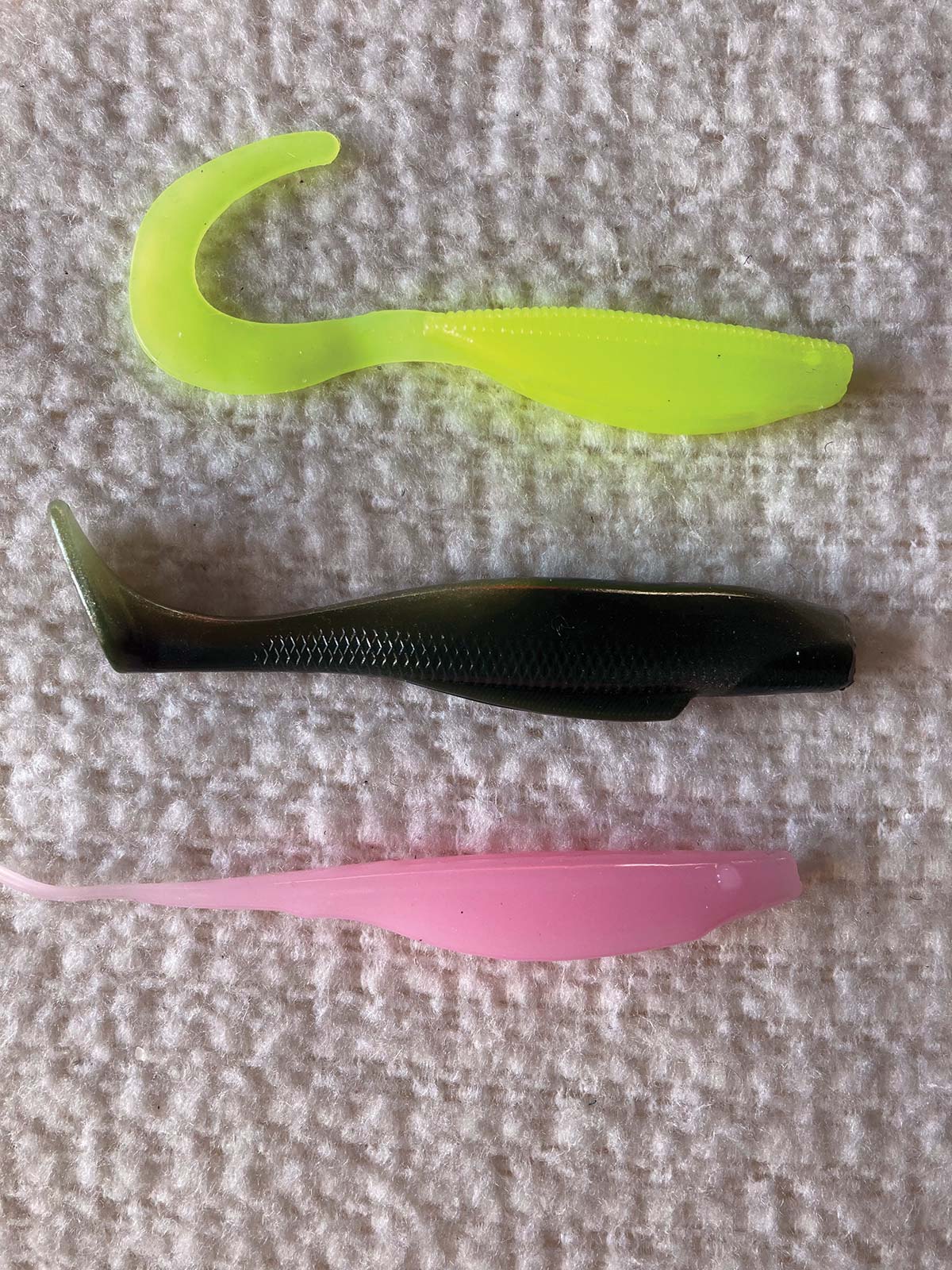
When it comes to weakfish, I don’t know if you can actually go too light. There are a bunch of reels out there for you to choose from. Personally, I use a Daiwa BG 2500, but I wouldn’t hesitate to buy a Penn Battle III or a Shimano Stradic in the 2500 to 3000 size range. It really doesn’t matter which name you choose, the key is keeping it small, and having a smooth drag. Do not worry about line capacity when it comes to a dedicated weakfish reel. You probably will not be targeting them in more than 25 feet of water. My reels are spooled with 15-pound J-Braid attached to a 15-pound test fluorocarbon leader via an Alberto Knot. When targeting weakfish, I tie my lures directly to the fluorocarbon leader. I do not use any power clips or snap swivels. The less terminal tackle the better.
Where rods are concerned, it seems the choices are endless. I use a Shimano Teramar (TMS-70M). This rod is 7-feet long with a line weight rating of 8 to 17 pounds and a lure weight rating of 3/8 to 1 ounce. The rod is labeled medium power with a fast action. The combined weight of this combination is only 16 ounces. Going with heavier rods and reels will not allow you to feel that subtle tap that weakfish are known for. Before we move on, I just want to mention how important it is to set your drag properly. Every time you hook up with a weakfish, no matter how big or small it is, the fish should be able to pull some drag.
Soft Plastics
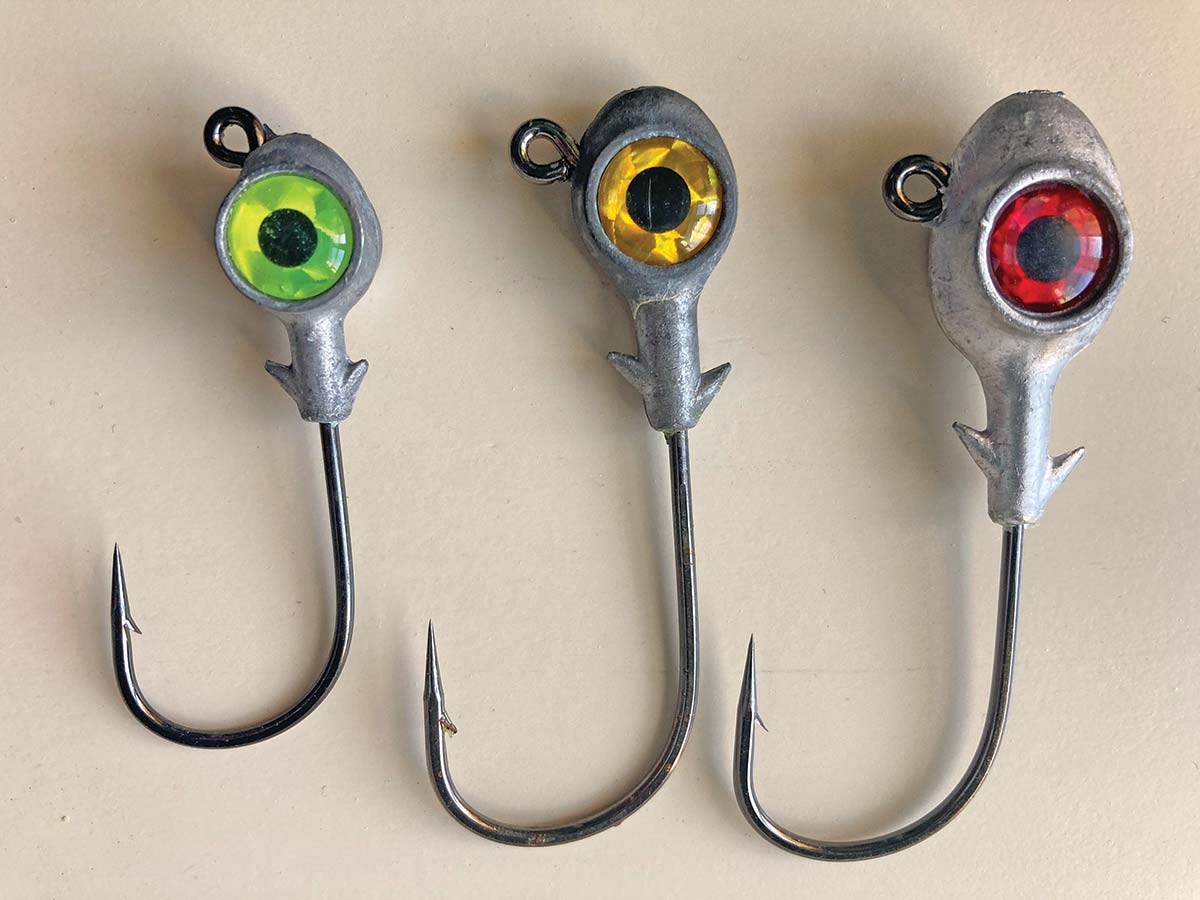
There are so many to choose from – Gulp, Fishbites, RonZ, Bass Assassins, Slug-Go’s the list goes on and on. The lures that I happen to use the most for weakfish are Z-Man’s, and there are two reasons why. First and foremost, they catch weakfish just like the other brands that I mentioned. Second, what sets Zman apart from all other manufacturers is the 10x elastic stretch – no gimmick here. While I’m obviously fishing areas frequented by weakfish, these same areas hold their share of toothy critters. Blowfish and snapper bluefish will chew up your soft plastics. I have had days where I caught 30 weakfish on the same Z-Man bait. The other types of soft plastics just don’t hold up as well.
Once you settle on which manufacturer you want to use, it’s time to think color. Pink has always been the go-to color when it comes to weakfish. I do use pink, however I also use many other colors. Each brand usually has their own quirky names for the colors that they sell. Nuclear Chicken (Gulp), Chicken on a Chain (Bass Assassins), Electric Chicken (Z-Man). What is up with the chicken obsession? I guess we can chalk it up to some clever marketing. You can’t
go wrong with any of these colors – all of them will catch weakfish. I choose my color based on the water clarity. I prefer very bright colors, like chartreuse, when the water is dirty. When the water is clean, I like to use something in a dark green shade. Z-Man makes a few that fit the bill. Hot Snakes, Redfish Toad and Ayu are always on my boat. Most of my weakfish soft plastics are in the four to six inch range. You will probably get more fish with smaller baits especially if they are feeding on spearing, however if you are out to set a personal best, don’t be afraid to go with something as large as six inches.
The only thing left to decide would be choosing the profile (shape) of the lure. I know I sound like a broken record but once again, there are a lot to choose from. The three that I use the most are Jerk Shads (skinny body with a split tail), grub tail (short stubby body with curly tail) and minnow/mullet (basically a jerk shad with a paddle tail).
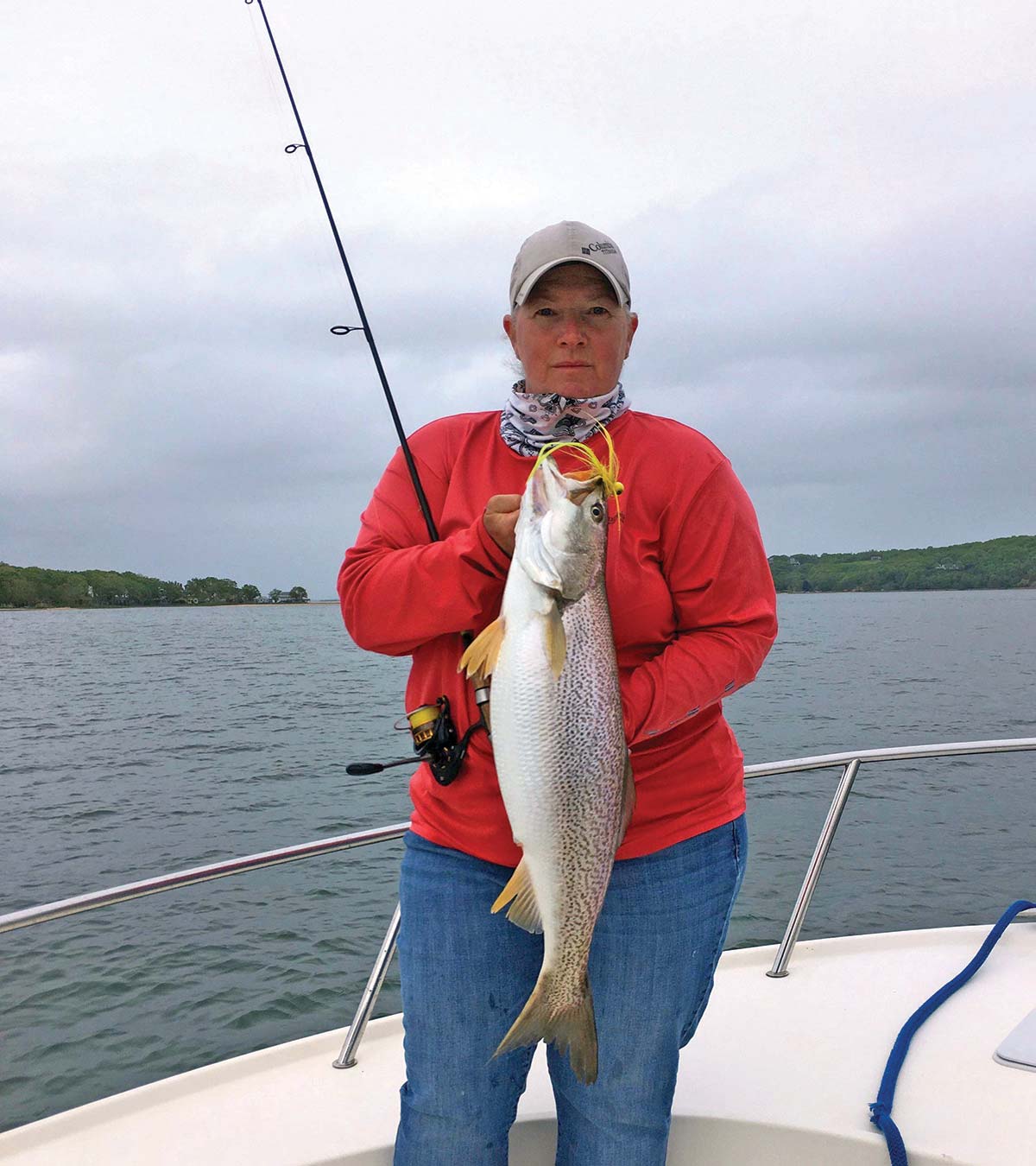
Jig Heads
Fisherman subscribers should keep in mind that the Dream Boat Fishing Challenge is in play beginning this month and weakfish are among the eight eligible species which could help win you that new Steiger Dream Boat. Weakfish are also the Fish of the Month for May. Enter the biggest weakfish this month and you’ll win an Accurate Tern TX-400X Reel and a weakfish mount from Global Fish Mounts. The minimum size for weakfish entry in the Dream Boat Fishing Challenge is 5 pounds. May is prime time for a tiderunner weakfish and they are suckers for soft plastics fished on a jig head or bucktail. Light spinning tackle will help you make the right presentation, and don’t forget the net!
Yep, just like soft plastics there seems to be an endless amount of jig heads to choose from. A bunch of variables come into play when choosing the right jig head. Your lure’s profile, the speed of your drift, are you fishing around areas that have weeds, etc. One of my favorite jig heads is made by Eye Strike Fishing. They offer the same style jig head in different sizes and different size hooks. When it comes to weakfish I like to use jig heads either 1/4 ounce (2/0 hook) or 1/2 ounce (4/0 hook). There are a few reason why I use Eye Strike. First, they are built with some of the best hooks on the market – Mustad UltraPoint. Second, they feature a very large eye, which makes it easier for predators to see. Finally, they feature large and sharp bait-keeper prongs to keep your soft plastic firmly in place. Eye Strike Jig heads and Z-Man soft plastics make for a lethal combination.
I truly believe catching weakfish is a lifelong education as it is with most other fish. If you are willing to keep an open mind and try new things, it will ultimately lead to you becoming a better and more productive angler.

